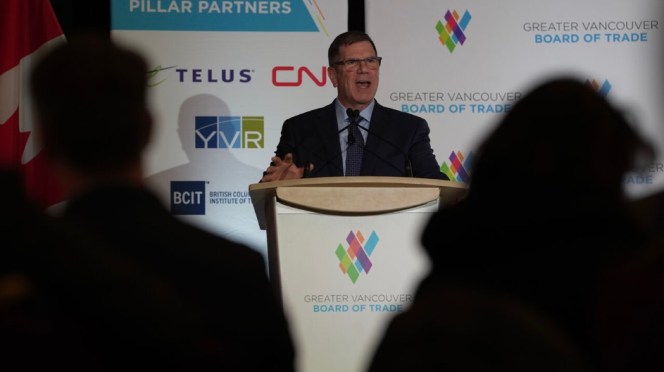With Mark Carney, a two-time former central banker, assuming office as prime minister of Canada, the country is poised for a strong fiscal stimulus, which analysts say could potentially reduce the urgency for the Bank of Canada to cut interest rates. The fiscal push “will take the onus off the central bank to cut as significantly as they did during past economic crises like COVID and the global financial crisis,” says Carl Gomez, chief economist and head of market analytics at CoStar Group Canada.
Most analysts still expect rates to end the year lower than their current 2.75% level, but the outlook has softened around how deep those cuts will be and how quickly they’ll be made. Economists say the government’s fiscal measures will indirectly play into the central bank’s calculations. “We do not feel Carney’s leadership will nudge the Bank of Canada directly,” says Ashish Dewan, senior investment strategist at Vanguard Canada. “However, indirectly, his government’s policy of increased fiscal spending reduces the likelihood of deeper rate cuts, particularly beyond a year-end policy rate of 2.25%.”
Carney’s Policies: A Break or Boost for Rate Cuts?
The new Liberal government platform has promised nearly C$130 billion in spending across infrastructure, defense, housing, internal trade, resource development, and more. Meanwhile, US tariffs continue to exert inflationary pressure, further complicating the Bank’s calculus for rate cuts.
As the trade war drags on, Canadian growth may deteriorate and inflation may tick up moderately over the next couple of quarters, according to Jack Manley, global market strategist at JP Morgan Asset Management. Nevertheless, he believes that “[since] the Bank of Canada has demonstrated itself to favor the labor market and the consumer, even if it means letting prices move a bit higher, we will see more cuts this year.” Notably, the central bank has already acknowledged that monetary policy has limited tools in a trade war beyond managing price stability.
Stephen Brown, deputy chief North America economist at Capital Economics, cites former Bank of Canada Governor Stephen Poloz’s remark a decade ago that C$5 billion in fiscal stimulus equates to a 25-basis-point interest rate cut. “Taking into account the 50% increase in nominal GDP since then, that would seem to suggest that the government’s planned C$15 billion widening of the budget deficit for this year might reduce the need for roughly 50 basis points of rate cuts,” he says. However, he maintains his forecast for further easing despite the Liberals’ win.
RSM Canada economist Tu Nguyen echoes this, saying the Carney government’s expansionary fiscal plan (which entails spending more money to boost the economy) “might be necessary to soften the blow of a recession, while reducing the need for further rate cuts.” She projects two more cuts by the end of 2025, ending the policy rate at 2.25%.
The Bank of Canada has cut seven times since its easing cycle began last summer, bringing the policy rate from 5.00% to 2.75%. The Bank paused this trend at its April meeting.
Will Carney Pull the Central Bank’s Strings?
Carney’s election comes amid heightened focus on the independence of central banks in the wake of US President Donald Trump’s attacks on US Federal Reserve Chair Jerome Powell. “As a former central banker, Carney knows the importance of central bank independence,” says BMO senior economist Shelly Kaushik.
While Carney is unlikely to personally influence monetary policy, his government’s fiscal stance is likely to have an impact on the central bank’s thinking. “Broadly speaking, the Liberal election platform promised more stimulus, which could add some marginal hawkishness to the Bank of Canada’s decisions,” Kaushik says. Still, she cautions that it’s unclear whether that hawkish tilt will be enough to shift the Bank of Canada’s rate path. She continues to forecast “three more rate cuts in June, September, and December.”
Eric Lascelles, chief economist at RBC Global Asset Management, agrees that as a former banker, Carney would be careful not to tread on policymakers’ toes. “More generally, Carney will well appreciate the importance of respecting central bank independence, and similarly of ensuring that fiscal policy does not work at odds with monetary policy—both small wins for the central bank,” he says.
Tariffs to Take Center Stage
In the near term, Kaushik says the trajectory of the US-Canada trade dispute and its impact on the domestic inflation and economic growth will be the key driver of monetary policy. Therefore, negotiating a favorable deal with President Trump remains Carney’s most urgent task.
Manley thinks Carney’s election is seen by some as a clear sign that Canadian voters are looking for a leader who will push back against US trade pressure. “This suggests that while negotiations and ultimately reconciliation are possible, the path there may be uncomfortably long,” he says.
Dewan maintains a base case tariff scenario of “an average 10% across-the-board tariff on Canadian goods by the US, with retaliation from Canada.”
Adding to that cautiously optimistic view, Nguyen observes that while tariffs may briefly raise inflation expectations among businesses and consumers, they are likely to result in a “onetime price increase rather than entrenched higher inflation.”
The Bank of Canada must now balance price stability and growth. For now, though, maintaining price stability remains the Bank’s priority. “Importantly, monetary policy cannot fully shield the economy from global trade disruptions,” says Nguyen. “It can only cushion the blow by stabilizing prices for consumers while keeping borrowing costs moderated to support investment and consumption.” Policymakers have already withdrawn forward guidance, acknowledging that the path ahead is highly uncertain for the next year and a half.
The author or authors do not own shares in any securities mentioned in this article. Find out about Morningstar’s editorial policies.














